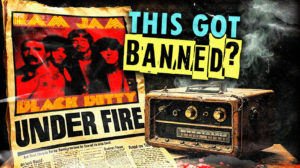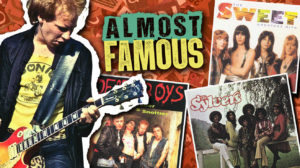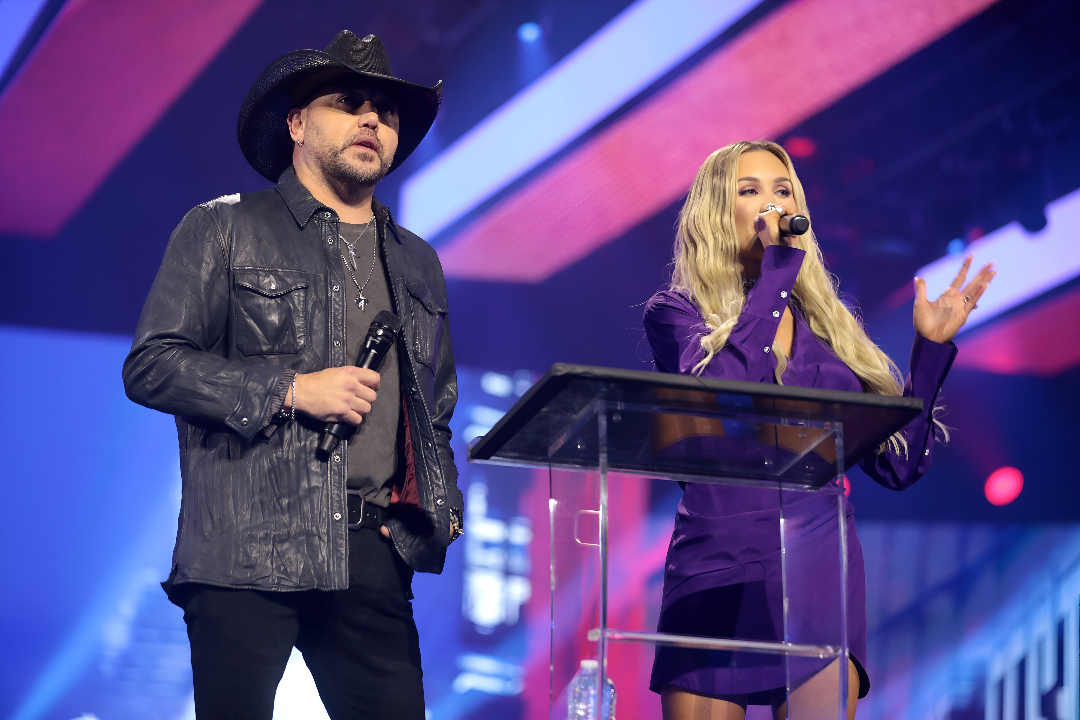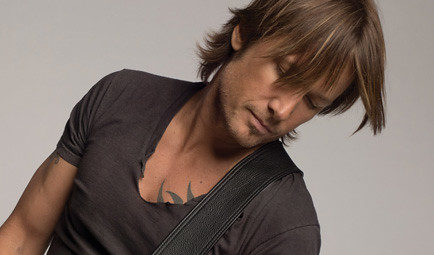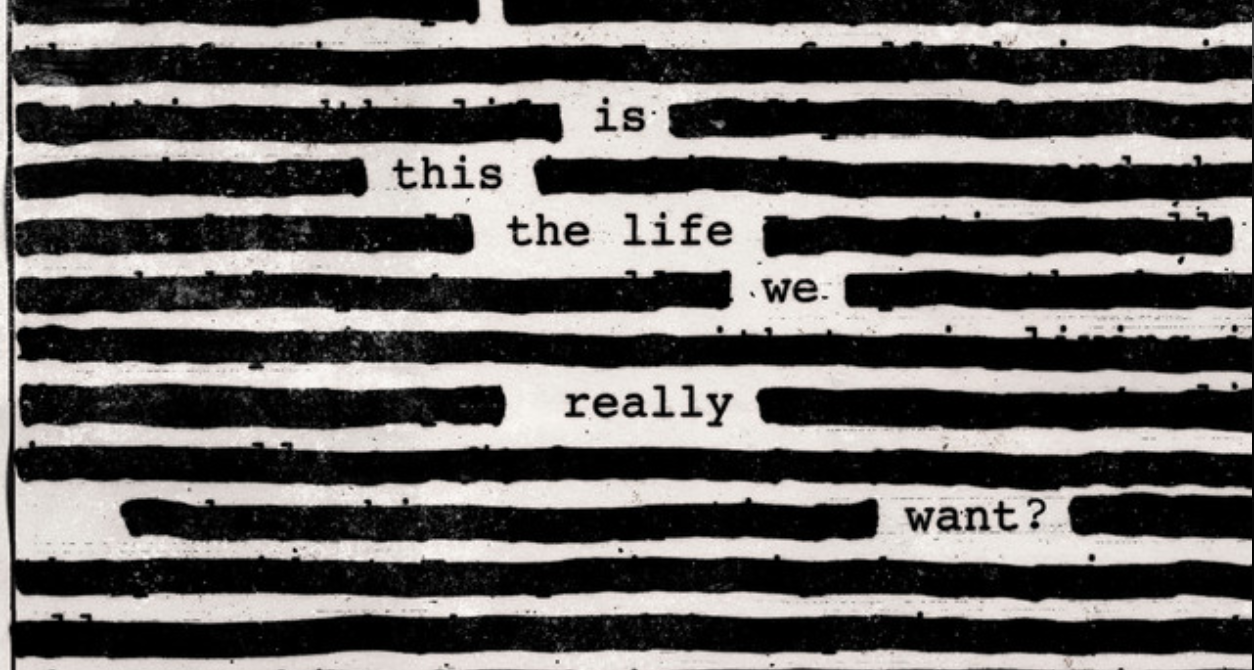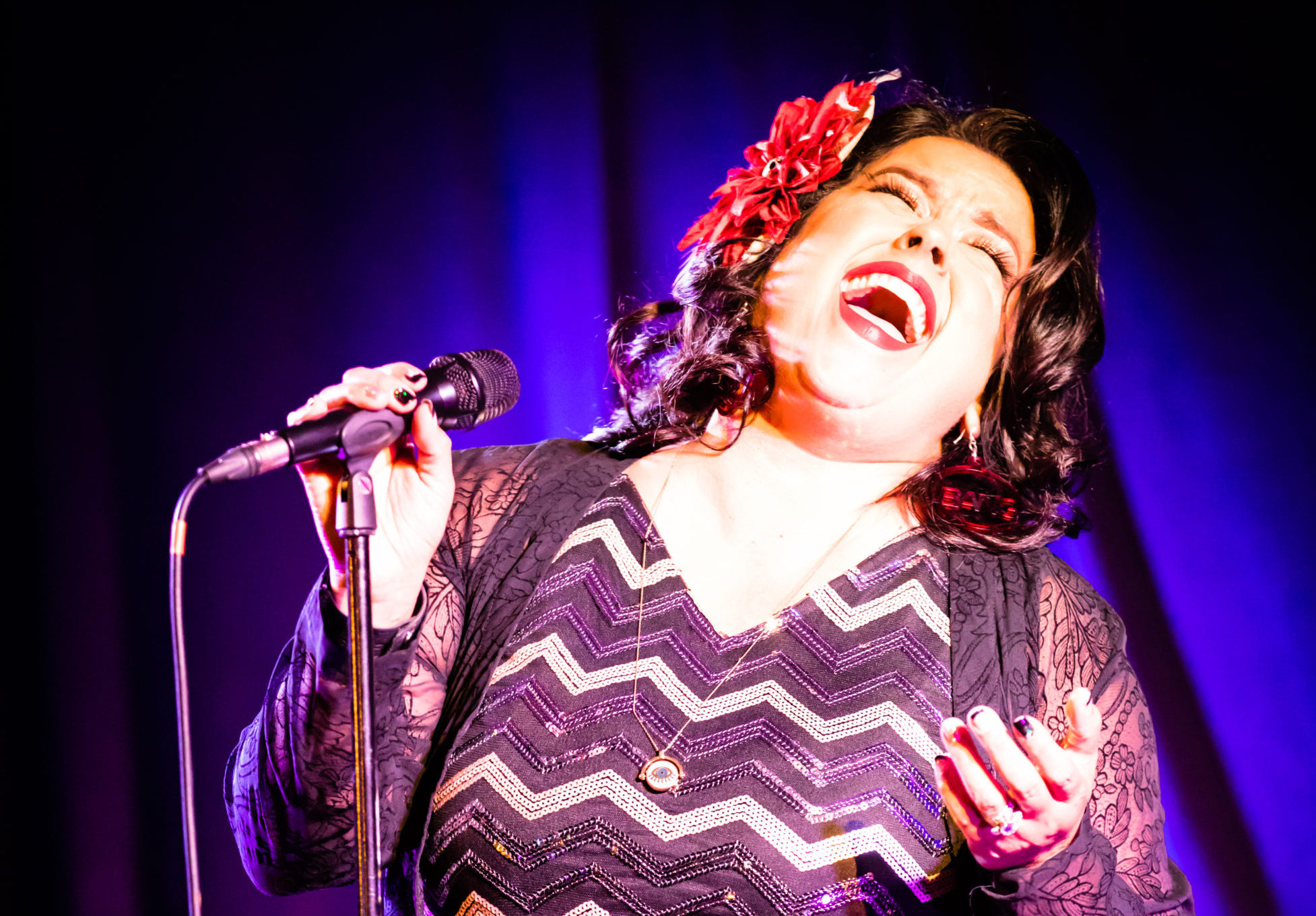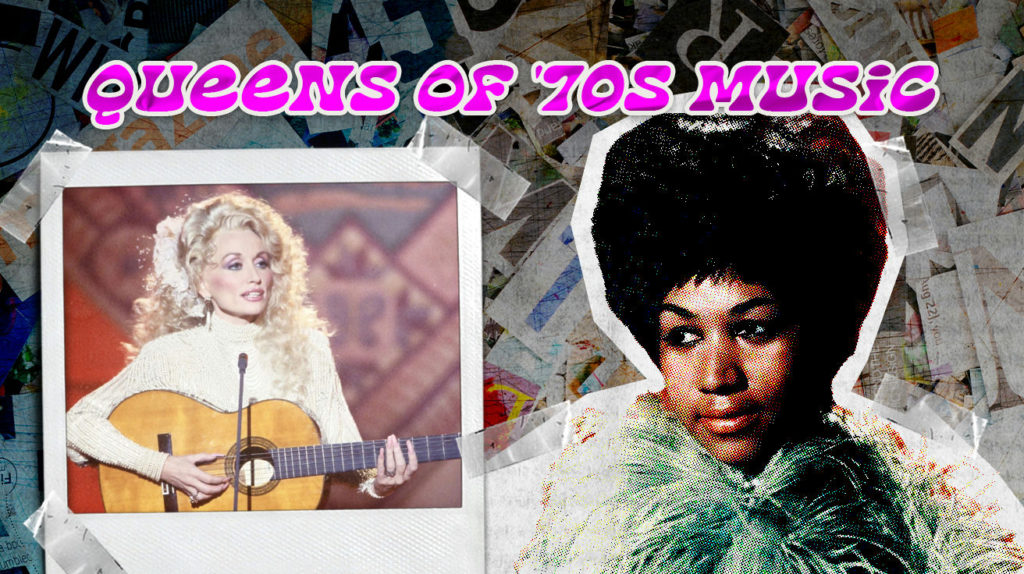
Female artists in the 1970s smashed industry barriers with nothing but their voices, stories, and pure audacity. Their revolution wasn’t quiet. They fought for space in an industry designed to minimize them, capturing emotional truths too raw for radio while demolishing expectations of what women could accomplish in music.
These women weren’t just making hits—they were crafting survival guides, creating anthems of liberation and crafting new sonic languages. The 1970s was a battlefield where female artists seized control of their narratives while the record industry scrambled to keep up.
22. Stevie Nicks
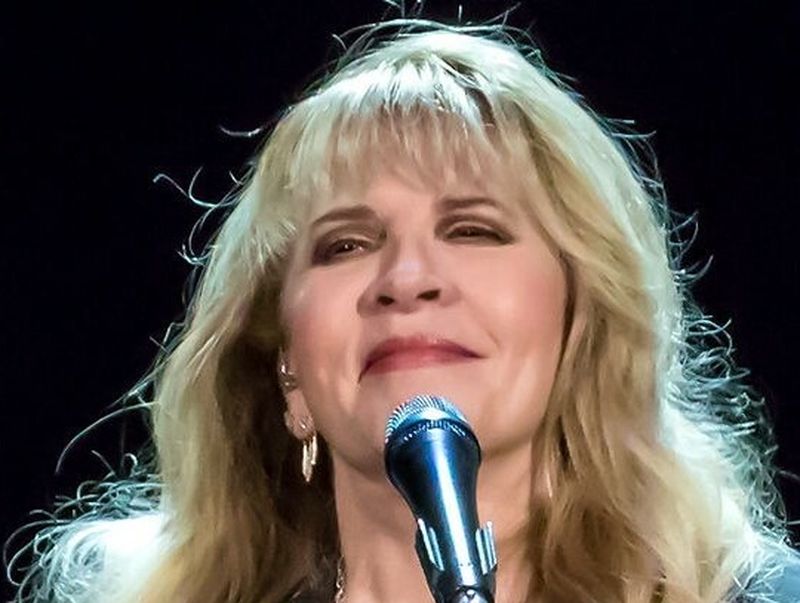
Rock demanded women choose between sex symbol or one-of-the-guys, but Nicks created a third option entirely her own—the mystical storyteller whose power came from somewhere ancient and untouchable. If you’ve ever felt trapped by limiting stereotypes, Nicks’s career offers an inspiring alternative.
The most popular 70s songs she contributed to Fleetwood Mac—”Rhiannon” (1975), “Landslide” (1975), “Dreams” (1977)—served as the emotional anchors that transformed a good blues-rock band into cultural phenomenon. Nicks created space for feminine mysticism in the hypermasculine rock landscape, establishing a template for artists who fuse spirituality with rock energy.
When everyone expected her to play by rock’s rules, she instead made the genre adapt to her otherworldly vision. Nicks’s cultural imprint has only deepened with time, influencing entire approaches to artistic identity.
21. Andrea True Connection

The former adult film actress didn’t merely transition to music; she introduced her unashamed sexuality into the mainstream through disco’s liberated channels. Caught between cultural censorship and sexual liberation, Andrea True’s “More, More, More” (1976) stands as glorious evidence of disco’s rejection of respectability politics.
The song’s backstory—recorded in Jamaica with producer Gregg Diamond after True found herself unable to take her commercial earnings out of the country—displaying disco’s improvisational spirit and international influences. True’s sensual vocal delivery went beyond provocation; it expressed female desire without apology or metaphor.
Facing career roadblocks that would have stopped most performers, True converted financial constraints into creative opportunity—proving that limitation often catalyzes the most innovative artistic solutions. Her groundbreaking approach laid groundwork for generations of women who would later claim their sexuality through music, even if it was through one-hit wonders.
20. Thelma Houston

Her interpretation transcended genre switching, achieving emotional reclamation that uncovered disco’s liberating potential within soul’s pleading intensity. Soul classics found disco resurrection when Houston’s rendition of Harold Melvin & The Blue Notes’ “Don’t Leave Me This Way” (1977) topped the US Hot 100 in March 1977.
Her Grammy-winning performance (Best Female R&B Vocal Performance) exceeded technical impressiveness; it reached spiritual heights that transcended the dancefloor. The production by Hal Davis walked perfect line between orchestral soul tradition and disco’s forward-looking electronic elements.
Houston demonstrated how great interpreters discover emotional possibilities the original artists might never have imagined. The journey from soul’s introspection to disco’s collective release showcased Houston’s genius, revealing that the greatest interpretations reimagine a song’s entire emotional landscape rather than simply covering it.
19. Aretha Franklin

Her reinterpretation of Otis Redding’s original surpassed mere arrangement; she reclaimed the song with such definitive force that the original version became the footnote. A vocal metamorphosis became political statement when Aretha reimagined “Respect” in 1967, issuing a cultural manifesto that would become the soundtrack to movements.
Franklin possessed more than technical gifts; she wielded cultural authority that elevated secular music to spiritual experience. Her ability to communicate complex emotional states through vocal nuance established standards for authenticity that artists still chase today.
Flat studio productions had dominated female vocal performances before Franklin, but her gospel-infused approach turned every recording session into church—lifting pop music to transcendent experience rather than mere entertainment. Franklin demonstrated how personal expression evolves into political statement through the alchemy of perfect performance.
18. Carol Douglas

The song’s medical metaphor exceeded clever hooks; it acknowledged that emotional wounds require treatment same as physical ones do. If you’re nursing heartbreak, Carol Douglas prescribed the perfect cure with her 1974 hit “Doctor’s Orders,” which cleverly packaged emotional healing as medical advice while reaching #11 on the Billboard Hot 100.
The international journey of this track—originally recorded by British singer Sunny Leslie before Douglas made it a hit in America—exemplifies disco’s global conversation and cultural exchange. Douglas’s smooth vocal delivery brought warmth and humanity to mechanized beats, creating perfect balance between technological innovation and emotional authenticity.
Before self-care became a marketing term, Douglas offered an antidote to heartache—combining medical authority with disco’s physical release to create dance floor therapy more effective than typical remedies. Her music validated seeking pleasure and connection as legitimate prescriptions for healing emotional pain.
17. Patti Smith Group

Their version of “Because the Night,” co-written with Bruce Springsteen in 1978, demolished the myth that hit singles required artistic compromise. When artistic credibility and commercial success seemed incompatible, the Patti Smith Group shattered this false dichotomy by reaching #13 on the US Billboard Hot 100.
Smith’s approach to Springsteen’s draft went beyond editing; she completely reimagined it through female perspective while maintaining the original’s urgency and adding poetic dimensions. The collaboration between these seemingly different artists emerged from producer Jimmy Iovine’s recognition that great art transcends scene boundaries.
Smith confirmed how intellectual depth and rock energy could coexist in perfect tension, creating a template for thoughtful yet accessible rock. For artists torn between commercial viability and artistic integrity, “Because the Night” remains a standard for achieving both without compromise—demonstrating that audiences can handle complexity when delivered with authentic conviction.
16. Anita Ward

The melody’s simplicity conceals its technical innovation—the marriage of electronic elements with human warmth that defines the best dance music. A single perfect song can outlast entire discographies of mediocrity. Ward’s “Ring My Bell,” which hit #1 on the Billboard Hot 100 in May 1979, captured a crystallized moment of pure joy.
The song’s instantly recognizable electronic drum tone transcended production texture, becoming one of dance music’s foundational building blocks that would echo through decades of club tracks. Ward’s signature hit bottled disco’s liberating essence so perfectly that one song secured her place in music history.
When caught in today’s fragmented musical landscape, “Ring My Bell” reminds us that sometimes a single, perfectly realized moment can create more lasting impact than a dozen mediocre albums. Ward captured disco’s liberation ethos right as the era began fading.
15. Barbra Streisand
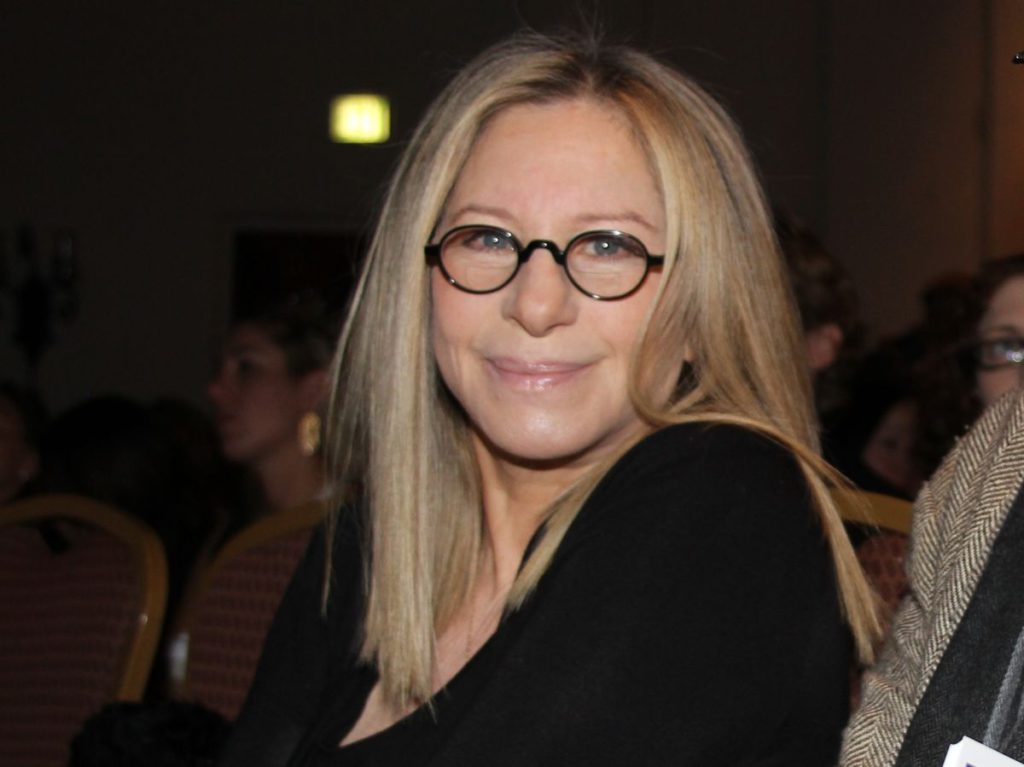
Her unprecedented dominion over her career—from song selection to production decisions—transcended personal preference; it constituted a radical seizure of authority that redefined what women could demand from the industry. The artistic control evolution found its champion in Barbra Streisand when female artists were still expected to smile and sing what they were told.
When she wrote “Evergreen” for “A Star Is Born” in 1976, she created more than a chart-topper; she crafted an Academy Award-winning statement (Best Original Song, 1977) and showed women could excel in every aspect of entertainment simultaneously. Her refusal to compromise her vision, voice, or appearance established the template for artistic integrity.
Caught between tradition and innovation, most female artists were limited by industry expectations, but Streisand’s multidimensional brilliance shattered those constraints with unmatched commercial and artistic success. The industry wanted a pretty songbird; Streisand built them an empire instead.
14. Sylvia

The song’s sensual vocals surpassed mere provocation; they asserted female desire through channels previously closed to such direct expression. Female sexuality in mainstream music needed a pioneer, and Sylvia’s “Pillow Talk” (1973) shattered radio’s boundaries while climbing to #3 on the Billboard Hot 100.
When Al Green rejected the song as too risqué, Sylvia’s decision to record it herself represented more than a career move; it reclaimed female desire from male gatekeeping. The Grammy nomination validated artistic legitimacy of expression that some dismissed as mere provocation.
Decades before the sexual empowerment anthems of the 2000s made female desire commercially viable, Sylvia demonstrated that authentic expression—even when controversial—ultimately resonates more powerfully than safer alternatives. Her courage established a foundation for generations of female artists who would later benefit from her boundary-pushing.
13. Karen Carpenter

Hidden behind that unmistakable voice stood a musical architect who exceeded expectations of a pretty voice in a pretty package; she embodied technical perfectionism whose drumming and vocal precision established new standards. The velvet-voiced drummer broke two stereotypes at once as Karen Carpenter achieved stardom with The Carpenters through hits like “Close to You” and “We’ve Only Just Begun.”
Her voice—that impossibly warm, technically flawless instrument—sounds deceptively simple but remains nearly impossible to replicate. The emotional directness she brought to seemingly simple melodies elevated adult contemporary from background music into emotional landscapes that articulated complex feelings with devastating accuracy.
If you’re struggling to understand why Karen Carpenter still matters, simply close your eyes and listen to her voice navigate the emotional complexity of “Superstar”—no explanation needed. Her performance demonstrated how technical mastery and emotional honesty could coexist in perfect, heartbreaking harmony.
12. Vicki Lawrence

This unlikely hit exceeded simple songcraft; it demonstrated that audiences craved narrative complexity even in mainstream pop—the song’s tale of murder and justice resonating across demographics. Murder and betrayal rarely top the charts, yet Vicki Lawrence brought Gothic storytelling to #1 with “The Night the Lights Went Out in Georgia” (1973).
Lawrence’s transition from comedy to chart-topping storyteller illustrated female artists’ versatility when industry gatekeepers tried limiting their expression. The song, written by Bobby Russell, topped the US Billboard Hot 100 with its sharply drawn narrative and emotional tension.
In today’s streaming era of three-minute disposable hits, Lawrence’s narrative masterpiece reminds us that audiences still hunger for songs that tell complete stories—the sonic equivalent of a page-turning thriller that keeps you listening until the shocking final verse. Lawrence showed how a well-crafted tale could capture the public imagination.
11. Gwen McCrae

Her masterful performance united vocal prowess with authentic feeling, creating a track that conveyed both vulnerability and strength. The sexual tension in R&B found its perfect metaphor in McCrae’s “Rockin’ Chair,” which topped the R&B chart and crossed over to #9 on the Billboard Hot 100 in 1975.
The song’s sensual rhythm section provided perfect foundation for McCrae’s commanding vocals to build atmosphere of anticipation and fulfillment. Originally intended for Betty Wright, the track found its definitive interpreter in McCrae, whose performance combined technical control with emotional abandonment.
Caught between disco’s coming dominance and soul’s fading commercial influence, McCrae’s “Rockin’ Chair” accomplished the impossible—creating an R&B classic that neither pandered to trends nor retreated into nostalgia. Her ability to convey complex desire without relinquishing authority created a template for expressing intimacy that maintained artistic dignity.
10. Donna Summer

Her music established liberation zones on dance floors where marginalized communities found celebration and sanctuary. Electronic dance music’s blueprint underwent reinvention when Summer’s 1977 collaboration with Giorgio Moroder on “I Feel Love” reshaped the fundamental architecture of dance music with its futuristic synthesizer patterns.
When critics attempted dismissing disco as disposable, Summer’s vocal mastery and pioneering production legitimized the genre as serious art. The electronic music renaissance that began with those hypnotic synthesizer patterns fundamentally changed dance music’s DNA—Summer crafted more than hits; she encoded the future of electronic sound.
“I Feel Love” has influenced countless tracks since its release, making it one of the most sonically influential electronic dance recordings in history. The track continues to echo through clubs worldwide decades later, proving Summer’s lasting significance.
9. Minnie Riperton
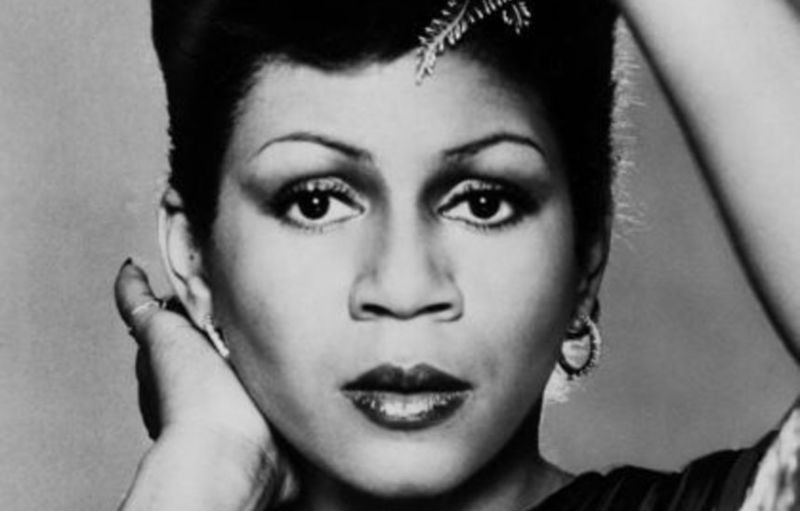
The song’s deceptive simplicity—written as lullaby for her daughter Maya Rudolph—conceals extraordinary technical achievement rendered with such emotional authenticity that it never feels like mere showing off. The F♯6 whistle register expanded vocal possibilities when Riperton’s “Loving You” (1975) showcased her famous vocal technique.
Riperton’s collaboration with producer Stevie Wonder demonstrated how artistic partnership could elevate material beyond category limitations. Her tragically shortened career—ended by breast cancer at just 31—leaves us wondering what innovations might have followed, but her influence echoes through generations of vocalists attempting to reach the heights she made seem effortless.
When struggling with the limitations of your own instrument, Riperton’s legacy offers the perfect reminder that technical mastery serves emotional expression—not the other way around. Her expansion of what seemed humanly possible in popular music still leaves singers in awe decades later.
8. Carly Simon

Her unflinching examinations of complex relationships gave voice to women’s experiences in ways radio hadn’t previously allowed. Elevating personal disclosure into cultural events, Carly Simon’s “You’re So Vain,” which topped charts in late 1972, surpassed conventional breakup songs; it showcased turning intimate experience into universal emotion.
Simon’s sophisticated blend of folk, pop, and jazz exceeding musical innovation; it established the sonic template for adult contemporary. Simon illustrated how personal material could transcend gossip and become art that resonated across generations, establishing the confessional songwriting approach that countless artists have since adopted.
The enigmatic quality of “You’re So Vain” became the gold standard for artistic discretion—maintaining decades of speculation while preserving the song’s emotional authenticity and maintaining mystique that still generates speculation decades later. Her work continues to influence contemporary songwriters.
7. Donna Fargo
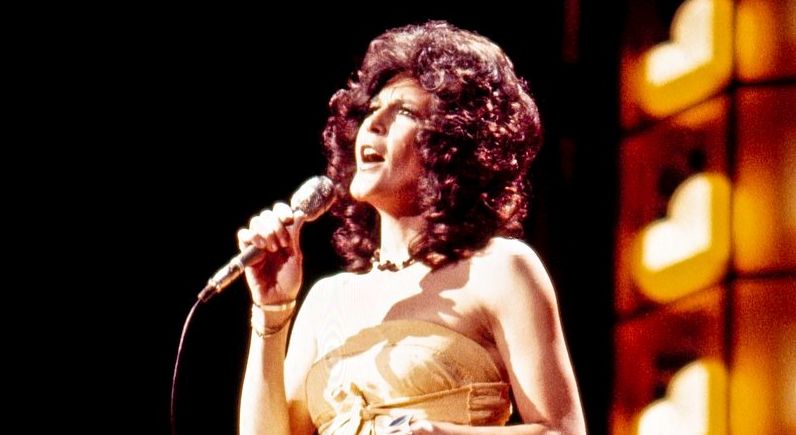
Donna Fargo’s infectiously optimistic anthems exceeded radio fodder; they embodied Grammy-winning acts of feminine self-determination that connected across demographics while she wrote her own material and controlled her artistic vision. Nashville wanted its women confined to heartbreak ballads, but Fargo crashed through with “The Happiest Girl in the Whole U.S.A.” in March 1972.
Former English teacher turned chart-topper, Fargo later expanded into greeting cards and books, creating a business model for female artists to convert their voice into an empire. Fifty years later, her joyful resistance still sounds ground-breaking in an industry that often rewards women’s trauma over their triumph.
Fargo’s sonic declaration that women could claim joy as boldly as they claimed pain won her Best Country Vocal Performance, Female, in 1973. She established a template many contemporary female artists now follow by controlling both her creative output and business ventures simultaneously.
6. Joni Mitchell

Her influence flows through generations of songwriters who discovered through Mitchell that vulnerability, when paired with technical brilliance, becomes an artistic superpower rather than a liability. Emotional authenticity in songwriting underwent dramatic renewal when Joni Mitchell released her June 1971 masterpiece ‘Blue,’ which surpassed critical acclaim.
Mitchell’s complex chord structures, experimental guitar tunings, and unflinching lyrical honesty exceeded artistic choices; they represented innovations against an industry that expected women to be pretty vessels for men’s compositions. Blue’s devastating emotional candor established a new benchmark that elevated songcraft from entertainment to essential art, influencing countless songwriters.
The album rewrote the rules for confessional music that still echoes through genres five decades later. Mitchell’s work demonstrated that deeply personal expression could achieve universal resonance when created with uncompromising artistic integrity and technical innovation.
5. Jean Knight

Recorded at Malaco Studios in Mississippi, the regional production created national anthem that gave voice to women tired of ego trips and empty promises. Tired of male posturing? Knight’s “Mr. Big Stuff” delivered the perfect musical shutdown, reaching #2 on the Billboard Hot 100 and earning double platinum status while spending five weeks at #1 on the Soul chart in 1971.
Knight’s confident delivery exceeded attitude; it asserted worth and boundaries at time when women were still expected to accommodate male fragility. The call-and-response chorus created community of affirmation that continues to empower listeners facing similar situations.
When you’re done accommodating fragile egos, Knight’s masterpiece still offers the perfect soundtrack for reclaiming your worth. This anthem exceeded sassy breakup song; it embodied preemptive rejection of masculine entitlement that continues to resonate across decades of changing gender politics.
4. Samantha Sang

Sang demonstrated that interpreting others’ material constitutes genuine artistry—a translation that can reveal new emotional dimensions in familiar structures. This voice elevated vulnerability into strength when Sang’s “Emotion” (1978) provided the ideal showcase for the Bee Gees’ songcraft—her crystalline vocal delivery capturing heartache with a directness the Gibbs’ falsetto couldn’t achieve while reaching #3 on the US Billboard Hot 100.
The production’s lush orchestration and emotional precision surpassed beauty; it exemplified how collaboration between complementary talents can create something transcendent. Sang showed how restraint and technical precision could create emotional impact more profound than vocal gymnastics.
Deep in disco’s heyday, when many songs celebrated physical pleasure, “Emotion” cut through the noise by speaking to heartbreak’s universal language—demonstrating that even at the height of disco fever, emotional authenticity still connected most powerfully. Her performance remains a standard for interpretive artistry.
3. Bette Midler

By creating experiences rather than just songs, Bette Midler pioneered a template for female artistic autonomy that runs directly from her Divine Miss M character to the theatrical pop spectacles that dominate arena tours today. While rock stars trashed hotel rooms, Bette Midler demolished every boundary between genres, mediums, and expectations.
Her concerts exceeded conventional performances; they embodied full-scale theatrical insurrections against the very concept of what female performers could embody on stage. Her brash brilliance exceeded entertainment; it became a battle plan for generations of women who’d refuse to make themselves smaller for mainstream comfort.
In a world demanding female artists choose between being taken seriously or being entertaining, Midler’s boundary-smashing career proved you could triumphantly be both. Midler’s refusal to be categorized surpassed artistic stubbornness—it represented visionary business strategy that redefined female artistic possibilities for decades to come.
2. Dolly Parton

Her compositions like “Jolene” (1973) and “I Will Always Love You” (1974) exceeded country songs; they embodied perfect narrative structures that could be reimagined across genres, decades, and generations. A business genius in rhinestones, Dolly Parton’s genre-hopping surpassed artistic restlessness; it represented calculated strategy from a songwriter who understood that great material transcends category limitations.
Parton’s business acumen—retaining publishing rights, diversifying into other media, building her entertainment empire—established the model for female artists controlling their legacies. The industry saw big hair and bigger personality; Parton was quietly building a business empire that would outlast them all.
For songwriters seeking the formula for timeless compositions, Parton’s catalog offers masterclasses in narrative economy—saying more with 200 words than most can express in a thousand. Her approach demonstrates how artistic integrity and commercial success can coexist when backed by exceptional talent and strategic vision.
1. Amii Stewart

The song’s Gold certification validated disco’s artistic legitimacy when critics attempted dismissing the genre as disposable. Soul classics needed disco reinvention, and Stewart’s reimagining of Eddie Floyd’s “Knock on Wood” (1979) accomplished more than a cover; it represented resurrection—taking soul’s emotional intensity and translating it through disco’s futuristic production techniques while topping both US and UK charts.
Stewart’s powerhouse vocals combined with innovative production demonstrated how musical evolution enhances rather than erases history. Her success proved that dance music could honor its roots while embracing technological innovation—a lesson electronic music producers still follow as they sample, remix, and reimagine music history through contemporary tools.
The tension between tradition and innovation often paralyzes artists, but Stewart’s interpretation showed that respectful reinvention creates the most vibrant cultural conversations across generations. Her approach provides a masterclass in updating classics while maintaining their emotional core.





